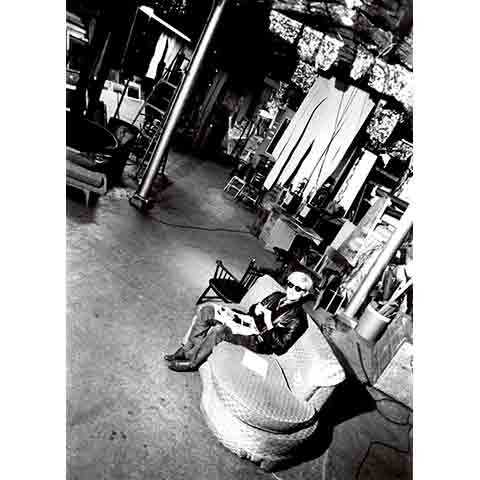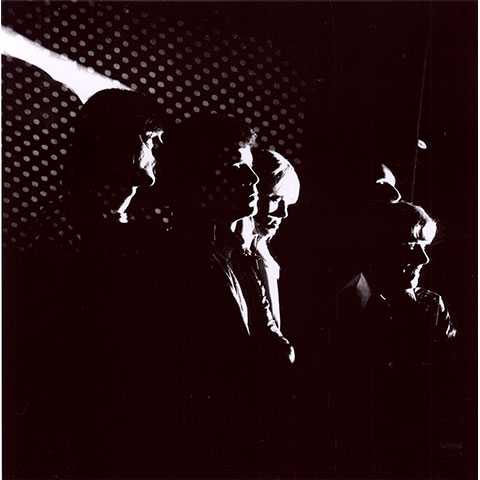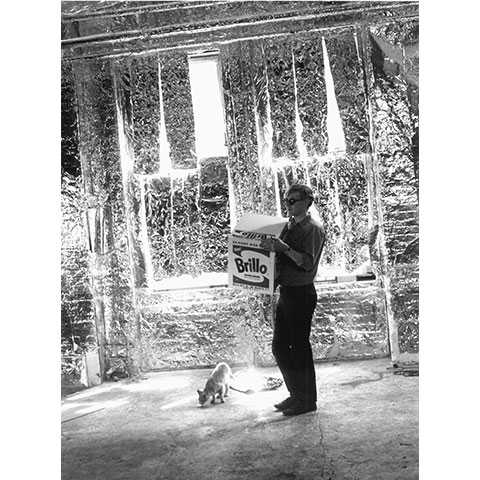A&D Gallery
51 Chiltern Street
London
W1U 6LY
United Kingdom




In 2004 we presented Billy Name's first commercial gallery exhibition in the U.K. Billy at this stage was not able to travel, so we went to Poughkeepsie, New York, to discuss his photographs and as it turned out everything from Buddha to the roots of the American Diner.
Born in 1940 in Poughkeepsie, he made his way to avant-garde New York City at the earliest opportunity to work with La Monte Young, Ray Johnson and graduates of Black Mountain College. He worked as a lighting designer for Contemporary Dance groups and moonlighted as a waiter at Serendipity 3, the fancy dessert restaurant in the East 60s where both Marilyn Monroe and Jackie Kennedy were customers and where Warhol was a regular. Andy became his boyfriend and together they plotted Warhol's transfer from Commercial to Fine Art.
Billy's haircut events were more about the performance than tonsorial result, but they inspired Warhol to make Billy the star of one of his early movies and seeing Billy's silver foiled apartment, he immediately asked him to decorate his new studio, 'The Factory'.
To many of us growing up in the U.K. during the 60's, Billy was the on-going glue that linked New York's two most powerful myths: Andy Warhol and the Velvet Underground, but sitting and talking in his home in Poughkeepsie, it was difficult to get him to take credit for any of his contributions. It eventually emerged that he was the creator of the famous 'Index Book' visiting the Random House production studio to look at various Pop-Up, Pull Here style effects, available from their children's publications, to be incorporated with the photographs of the Factory. He was reticent about his importance in building the relationship between the Velvets and Warhol. Barbara Rubin and Paul Morrissey brought the Velvets to the factory but it was Billy's endorsement of John Cale, who he had known from his Lamont Young time, that sealed the deal. Billy's photographs featured on three Velvet Underground albums (John Cale only appeared on two) as well as the cover of Nico's first solo album, 'Chelsea Girls'.
In the multi-tasking, speed fuelled 60's Billy was Warhol's studio assistant, set designer and secretary then one day in 1963, Warhol put a Honeywell Pentax camera in Billy's hand and made him the Factory photographer. Though others also documented those years, (including Nat Finkelstein and Stephen Shore) Warhol said 'Billy's photos were the only thing that came close to capturing the feel of the 1960s Silver Factory.â€
Before the Factory moved from 47th Street to Union Square, Name photographed Factory life, documenting its strange ways and its beautiful visitors: the hustlers and the models, the artists and the rock stars. Then in 1968 Billy retreated to his dark room primarily to explore his interests in Taoism, mysticism and narcotics. One night, as Billy said, 'I heard a bang, a strange type of bang, which I could not recognise, but I was printing and developing. As soon as I had my prints in the trays and fixed, and I went out and there was Andy, lying in a pool of blood on the floor. I went over to him, and picked him up in my arms and I was just crying and he came-to, and he looked at me and he said, 'Billy please don't make me laugh. It hurts too much.â€, and I said, 'Andy, I am not laughing I am crying.â€, and then he passed-out again, the ambulance came they took him to the hospital.â€
The damage that Valerie Solanas did with one bullet was astonishing. Ricocheting off the ribs the bullet went through the lungs, the liver and the stomach. The wounds apparently continued to bleed until the day he died in 1987. As Billy said '…so you couldn't expect him to be the same Andy that he was before the shooting.â€
The shooting had a huge effect on Billy, 'after the shooting I felt the trauma of this whole thing so much that I stayed in my dark room, which was also my living space. I only came out at night. I never came out in the day, because the trauma was so much to me that I could not socialise with people. I could not be light hearted.â€
'So a couple of years after that, I left because Fred and Paul took control. Fred was into the fine art, portrait, money portrait thing, Paul was into making the commercial success movies and there was not really a place for me anymore. So one day I left a note on the dark room door which said,
Dear Andy, I am not here anymore but I am fine. Love Billy.
And I went out into the world to see what the planet earth was doing……â€
Billy was always generous to A&D Gallery, generous with his time when we visited him in Poughkeepsie, taking us on a guided tour of the Queen's Museum when they re-staged Warhol's '13 Most Wanted Men' in 2014 and his participation in our Mail Art exhibition (a tribute to his friend Ray Johnson).
Billy was someone you fell in love with as soon as you met him, he was the most charming, generous, modest man you could hope to meet. Because he was unable to come to our exhibition back in 2004 he sent this note (a variation on the one previously left for Warhol)
A'n'D, I am not here but I am fine. Love Billy.
